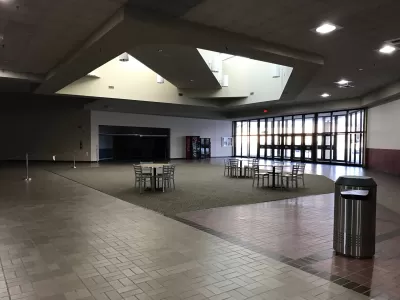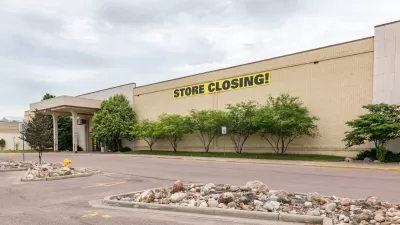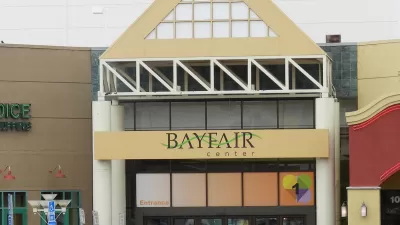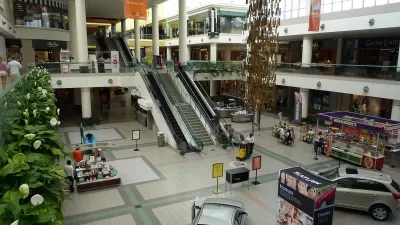Suburban malls around the country are shutting down, and the huge spaces offer a variety of opportunities for creative reuse.

"Dozens [of malls] nationwide have shuttered in the past decade, and a quarter of the estimated 1,100 that remain are projected to follow by 2022, opening large swaths of empty space," writes Abha Bhattarai. The empty structures mean that millions of square feet of retail space and parking lots have been left behind.
But developers and municipalities are also seeing the potential to repurpose these spaces in a number of very different ways. For example, in Nashville, Vanderbilt University took over a mall property and spent $99 million to renovate the facilities for specialty clinics, says Bhattarai. "Medical clinic leases at shopping malls have grown nearly 60 percent since 2017, while leases for clothing stores have fallen about 10 percent, according to data from CoStar Group."
Bhattarai describes other examples of abandoned malls transformed for new uses: megachurches, homeless shelters, fitness centers, and video gaming hubs. Some tenants are using spaces temporarily, while others are making large-scale renovation investments. In addition, some of these former malls still house retail establishments, an arrangement that developers see as a win-win since visitors to a gym, for example, are also potential shoppers at stores at the same location.
FULL STORY: Abandoned malls are sputtering back to life with megachurches, rooftop pools and homeless shelters

Study: Maui’s Plan to Convert Vacation Rentals to Long-Term Housing Could Cause Nearly $1 Billion Economic Loss
The plan would reduce visitor accommodation by 25,% resulting in 1,900 jobs lost.

North Texas Transit Leaders Tout Benefits of TOD for Growing Region
At a summit focused on transit-oriented development, policymakers discussed how North Texas’ expanded light rail system can serve as a tool for economic growth.

Why Should We Subsidize Public Transportation?
Many public transit agencies face financial stress due to rising costs, declining fare revenue, and declining subsidies. Transit advocates must provide a strong business case for increasing public transit funding.

How to Make US Trains Faster
Changes to boarding platforms and a switch to electric trains could improve U.S. passenger rail service without the added cost of high-speed rail.

Columbia’s Revitalized ‘Loop’ Is a Hub for Local Entrepreneurs
A focus on small businesses is helping a commercial corridor in Columbia, Missouri thrive.

Invasive Insect Threatens Minnesota’s Ash Forests
The Emerald Ash Borer is a rapidly spreading invasive pest threatening Minnesota’s ash trees, and homeowners are encouraged to plant diverse replacement species, avoid moving ash firewood, and monitor for signs of infestation.
Urban Design for Planners 1: Software Tools
This six-course series explores essential urban design concepts using open source software and equips planners with the tools they need to participate fully in the urban design process.
Planning for Universal Design
Learn the tools for implementing Universal Design in planning regulations.
City of Santa Clarita
Ascent Environmental
Institute for Housing and Urban Development Studies (IHS)
City of Grandview
Harvard GSD Executive Education
Toledo-Lucas County Plan Commissions
Salt Lake City
NYU Wagner Graduate School of Public Service





























